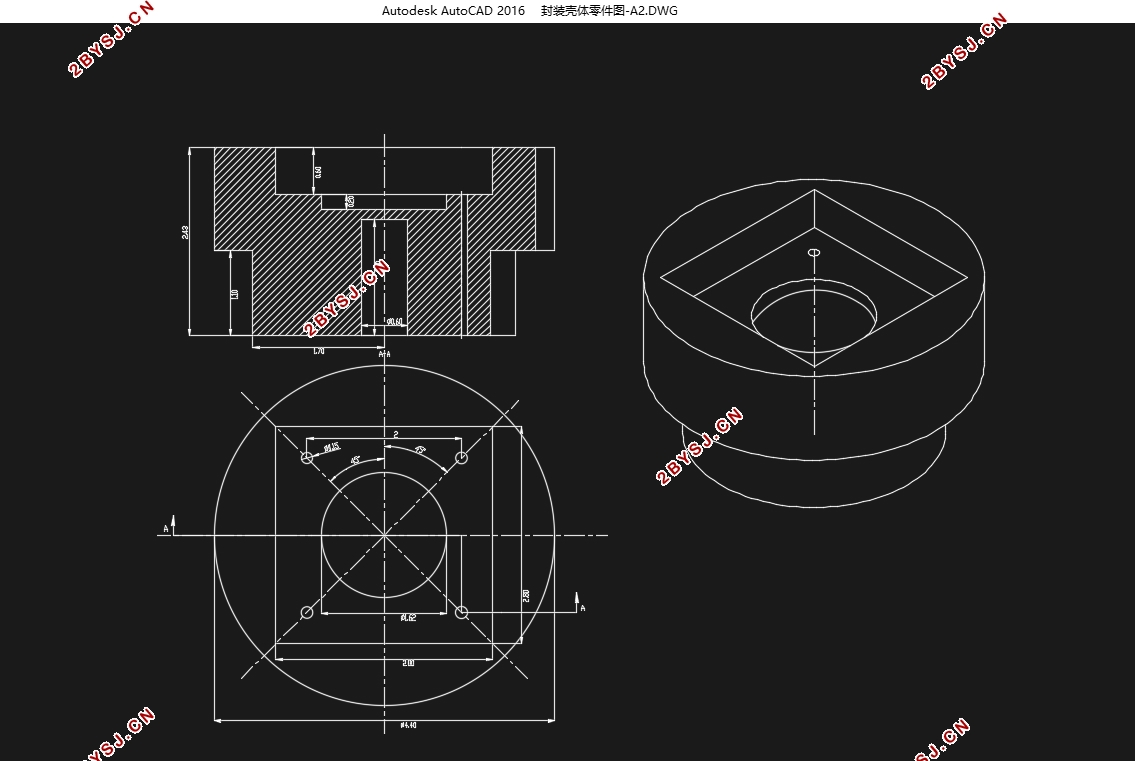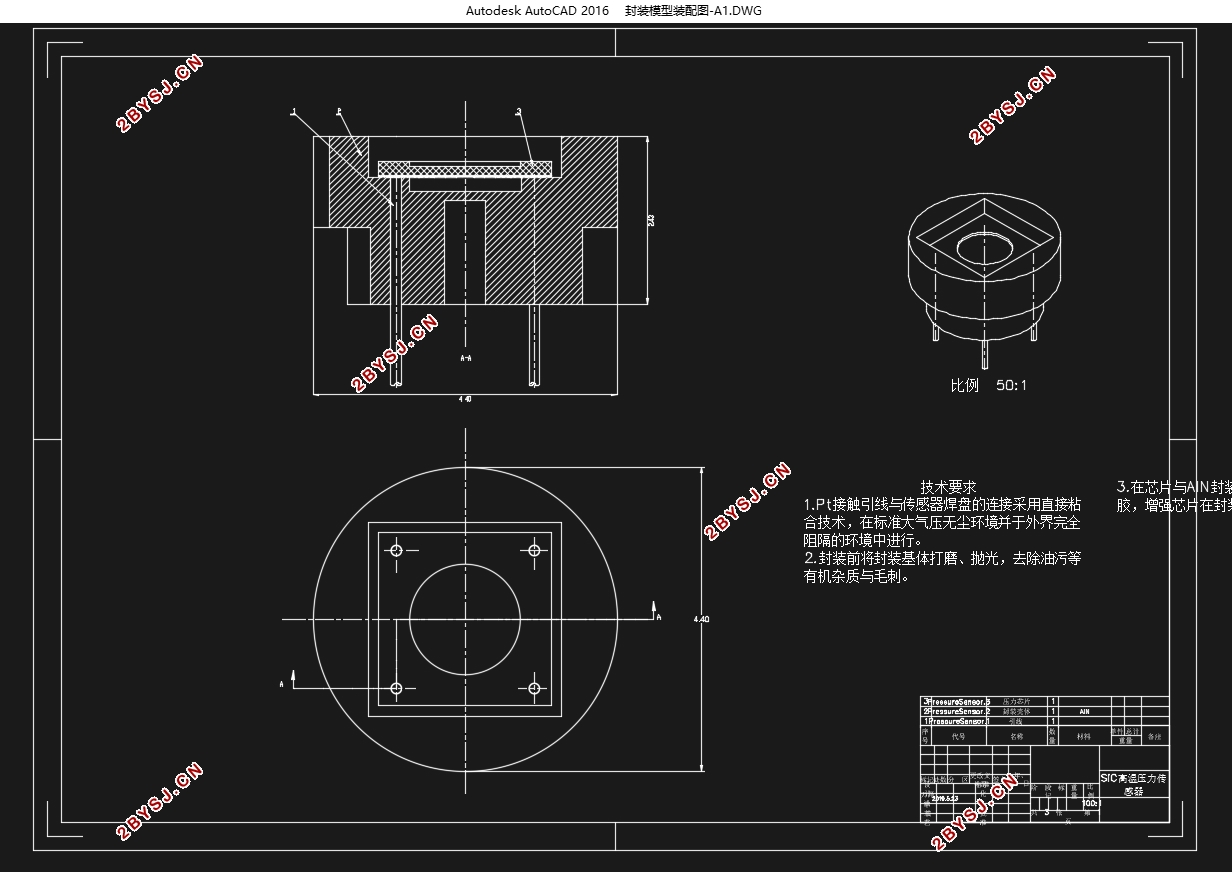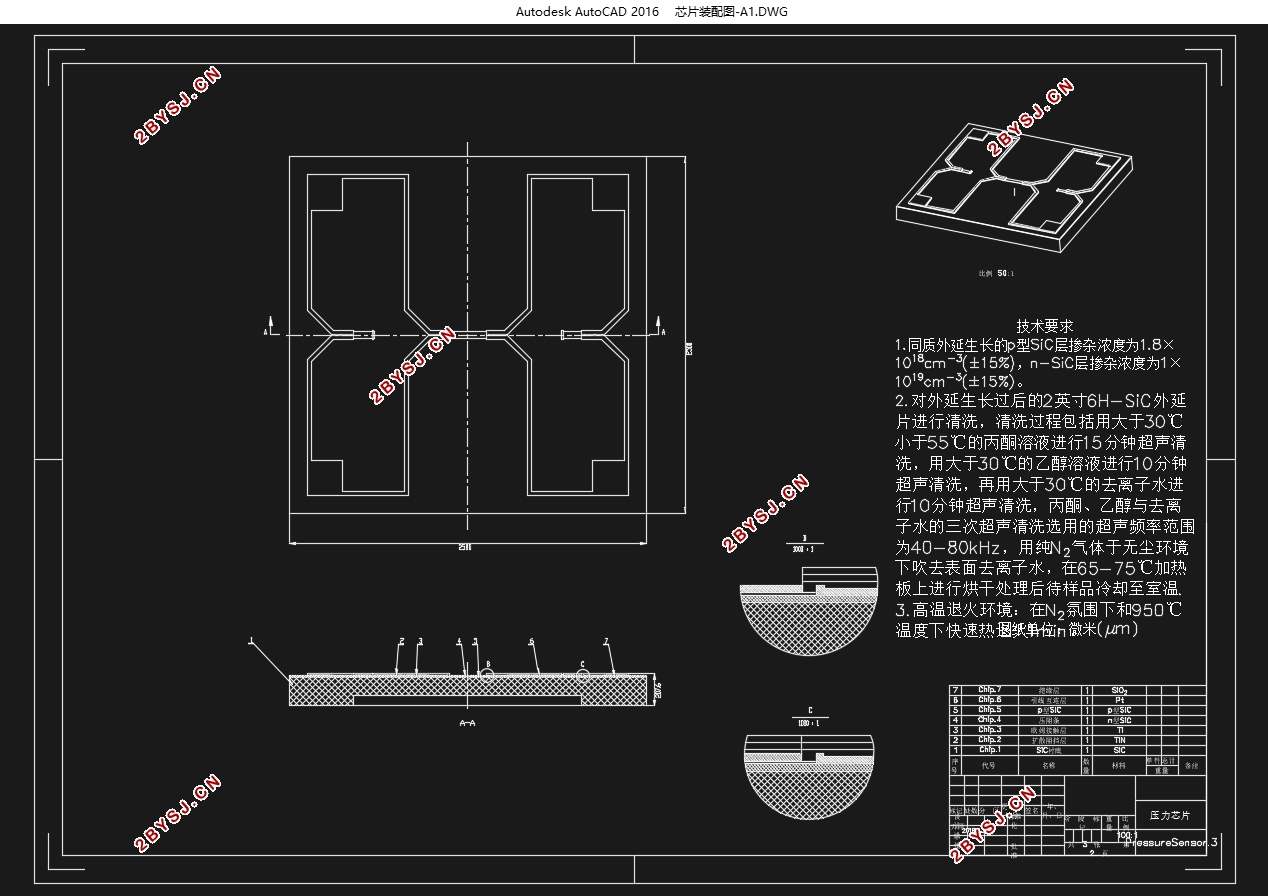基于MEMS的压阻式SiC高温压力传感器的研究与设计(含CAD图)
无需注册登录,支付后按照提示操作即可获取该资料.
基于MEMS的压阻式SiC高温压力传感器的研究与设计(含CAD图)(任务书,开题报告,文献摘要,外文翻译,论文说明书35000字,CAD图3张)
摘要
传感器技术是现代科学技术发展水平的重要标志,其中压力传感器是应用最为广泛的一类。而随着半导体技术与微机电系统 (MEMS)技术的发展,人们深入的对极端环境尤其是高温环境进行研究探索,例如在汽车发动机、航天航空、石油化工以及地热勘探等领域,使得压力测量需要在350℃甚至更高的温度环境下进行。目前发动机气缸壁的最高温度一般在500℃左右,气缸内最大压力一般在10MPa左右,最大平均压力在1.5MPa左右。气缸内高温高压的环境对压力传感器工作性能的稳定性提出了更高的要求。
碳化硅(SiC)材料由于其稳定的化学性质、高的热稳定性、优异的力学性能以及独特的电学特性,逐渐为人们所重视。它是第三代宽禁带半导体材料的代表,与现有的广泛用作为压力传感器材料的硅 (Si)相比,SiC材料具有优良的宽带隙、高热导率、高熔点、优异的力学性能、抗辐射、抗腐蚀、高的热稳定性、大的压电系数、高饱和电子漂移率以及小的介电常数等优良的材料性能,是制作耐高温器件的理想材料。
本毕业论文主要研究了目标工作温度达350℃以上,最高工作温度达600℃的压阻式SiC高温压力传感器,主要内容包括:(1)对MEMS的发展及国内外高温压力传感器研究现状进行了研究;(2)对传感器芯片结构进行了优化设计;(3)对MEMS加工工艺进行了研究以及并确定了芯片加工工艺流程;(4)对芯片的封装进行了研究及设计;(5)利用ANSYS等有限元软件对敏感膜片进行了静力学分析、对封装基体与SiC芯片进行了热应力分析、对芯片进行了模态分析和谐响应分析,并对传感器的灵敏度进行了仿真计算;(6)对芯片加工中的图形化工艺、光刻掩膜版的结构、深刻蚀与浅刻蚀以及湿法刻蚀的刻蚀剂等进行了研究。
关键词:MEMS;碳化硅;压阻式;耐高温;压力传感器;有限元分析
Abstract
Sensor technology is an important symbol of the development level of modern science and technology, among which pressure sensor is the most widely used one. With the development of semiconductor technology and Micro-Electro-Mechanical system (MEMS) technology,people have made in-depth research and Exploration on extreme environment, especially high temperature environment, such as automobile engine, aerospace, petrochemical industry and geothermal exploration, which makes pressure measurement need to be carried out at 350℃ or even higher temperature. At present, the maximum temperature of engine cylinder wall is about 500℃, the maximum pressure in cylinder is about 10 MPa, and the maximum average pressure is about 1.5 MPa.The high temperature and high pressure environment in the cylinder puts forward higher requirements for the stability of the working performance of pressure sensor.
Silicon carbide (SiC) materials have attracted increasing attention due to their stable chemical properties, high thermal stability, excellent mechanical properties and unique electrical properties.It is the representative of the third generation wide band gap semiconductor material. Compared with silicon (Si), which is widely used as pressure sensor material, SiC has excellent material properties such as wide band gap, high thermal conductivity, high melting point, excellent mechanical properties, radiation resistance, corrosion resistance, high thermal stability, large piezoelectric coefficient, high saturated electron drift rate and small dielectric constant. It is an ideal material for making high temperature resistant devices.
This thesis mainly studies the piezoresistive SiC high temperature pressure sensor with the target working temperature above 350℃ and the maximum working temperature up to 600℃.The main contents include: (1) the development of the micro-electronics system and the research status of high temperature pressure sensors at home and abroad are studied; (2) the structure of the sensor chip is optimized; (3) the fabrication process of the micro-electronics system is studied and determined; (4) the packaging of the chip is studied and designed;(5) static analysis of the sensitive diaphragm, thermal stress analysis of the package matrix and SiC chip, modal analysis and harmonic response analysis of the chip are carried out by using finite element software such as ANSYS,and the sensitivity of the sensor is simulated.(6) thegraphical technology in chip processing, the structure of photomask, deep and shallow etching and etchant for wet etching are studied.
Keywords: MEMS;Silicon carbide;Piezoresistive type;High temperature resistant;Pressure sensor;Finite element analysis.




目录
第1章文献综述 1
1.1 研究背景及意义 1
1.2 MEMS介绍 2
1.1.1 MEMS材料 2
1.1.2 半导体材料的发展 3
1.1.3 SiC材料介绍 4
1.1.4 MEMS加工制造工艺 6
1.1.5 MEMS的应用 7
1.3 SiC压力传感器国内外研究现状 7
1.4 课题研究目标及论文内容结构 8
第2章压阻式压力传感器原理与芯片关键参数设计 10
2.1 压阻式压力传感器的工作原理 10
2.1.1 压阻效应 10
2.1.2 压阻式压力传感器测量电路 11
2.2 压敏电阻的布置形式研究 12
2.2.1 敏感膜片变形受力分析 12
2.2.2 压敏电阻相对变化与应力的关系 14
2.2.3 压敏电阻的应变灵敏度系数研究 14
2.2.4 压敏电阻布置形式确定 15
2.3 芯片关键参数设计 16
2.3.1 敏感膜片尺寸设计 16
2.3.2 压敏电阻尺寸设计 17
第3章加工工艺与封装设计及相关仿真 20
3.1 传感器芯片加工工艺流程研究与设计 20
3.1.1 芯片材料 20
3.1.2 芯片制备流程设计 20
3.1.3 MEMS加工工艺研究 22
3.1.4 芯片加工工艺流程确定 26
3.2 欧姆接触金属体系的研究与设计 30
3.3 传感器封装设计 32
3.3.1 传感器封装要求 32
3.3.2 传感器封装方案 32
3.4 敏感膜片的静力学仿真 36
3.5 传感器的灵敏度仿真计算 41
3.6 传感器封装系统的热应力仿真 43
3.7 芯片的模态分析及谐响应分析 46
第4章芯片关键加工工艺研究 52
4.1 光刻工艺及光刻掩膜版的设计 52
4.1.1 光刻基本原理及光刻胶性质 52
4.1.2 光刻掩膜版版图设计 53
4.2 干法刻蚀 59
4.2.1 SiC的浅刻蚀——RIE反应离子刻蚀 59
4.2.2 SiC的深刻蚀——ICP电感应耦合等离子体刻蚀 61
4.3 湿法刻蚀 64
4.3.1 SiO2的湿法刻蚀 64
4.3.2 金属体系的湿法刻蚀 65
第5章总结与展望 66
参考文献 68
致谢 71
